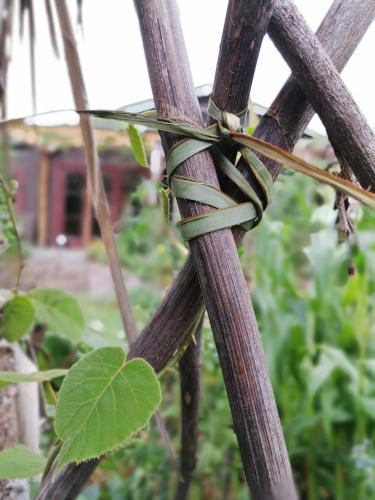New Zealand Native Flax
Harakeke (Phormium tenax) and Wharariki (Phormium cookianum)
New Zealand flax, or harakeke, is a hardy perennial plant with striking, sword-shaped leaves. It is a versatile, iconic species used in traditional Māori culture and modern landscaping. Wharariki is its smaller, more delicate relative, often found in coastal and alpine areas.
Characteristics
Phormium tenax (Harakeke)
- Height: Leaves grow 1–3 meters tall, with flower spikes reaching up to 4 meters.
- Leaves: Long, tough, and fibrous; green or bronze with red or yellow margins in some cultivars.
- Flowers: Tall, tubular red or yellow flowers on stalks in summer, rich in nectar.
- Habitat: Found in wetlands, coastal areas, and forests.
Phormium cookianum (Wharariki)
- Height: Leaves grow up to 1.5 meters, with flower spikes up to 2 meters.
- Leaves: Softer and more flexible than harakeke.
- Flowers: Yellow-green flowers that hang downward.
- Habitat: Prefers drier, coastal, and rocky environments.
Propagation
Native flax can be propagated by division or seeds.
1. Division (Preferred Method)
- Timing: Late autumn to early spring (Southern Hemisphere: March–September).
- Process:
- Select a mature plant with multiple clumps (fans).
- Dig around the base of the plant to expose roots.
- Separate fans, ensuring each has roots attached.
- Trim leaves back by half to reduce water loss.
- Replant immediately in prepared soil or pots.
- Benefits: Produces faster results with identical traits to the parent plant.
2. Seeds
- Timing: Collect seeds in late summer (February–April).
- Process:
- Harvest seed pods when brown and dry.
- Extract seeds and soak them in water for 24 hours.
- Sow seeds in a seed-raising mix, lightly covering with soil.
- Keep moist in a warm, shaded area. Germination occurs in 4–8 weeks.
- Benefits: Preserves genetic diversity, but plants take longer to mature.
Cultivation
1. Site Selection
- Sunlight: Prefers full sun but tolerates partial shade.
- Soil: Thrives in well-drained to damp soils. It tolerates poor, sandy, or clay soils.
- Climate: Hardy and tolerant of wind, salt, and frost.
2. Planting
- Spacing: Space plants 1–2 meters apart, depending on the species and intended use.
- Hole Preparation: Dig a hole twice the width of the root ball and as deep as the roots.
3. Watering
- Keep soil moist during the establishment phase (6–12 months).
- Once established, native flax is drought-tolerant but appreciates occasional watering in extended dry periods.
4. Fertilization
- Generally low-maintenance. Compost or a slow-release fertilizer can be added in early spring for faster growth.
5. Pruning and Maintenance
- Remove Dead Leaves: Regularly trim old or damaged leaves close to the base.
- Flower Stalks: Cut back spent flower spikes to tidy the plant.
- Harvesting for Use: Follow Māori tikanga by cutting outer leaves only and avoiding the central rito shoot.
Pests and Diseases
- Generally pest-resistant, though occasional infestations of scale insects or aphids may occur.
- Root rot can develop in overly waterlogged soils. Ensure good drainage to avoid this.
Benefits of Growing Native Flax
- Wildlife Habitat: Provides nectar for birds (e.g., tūī, bellbirds) and habitat for insects.
- Erosion Control: Strong roots stabilize soil.
- Low Maintenance: Drought-tolerant and hardy once established.
- Cultural Value: Supports traditional weaving and crafting practices.

